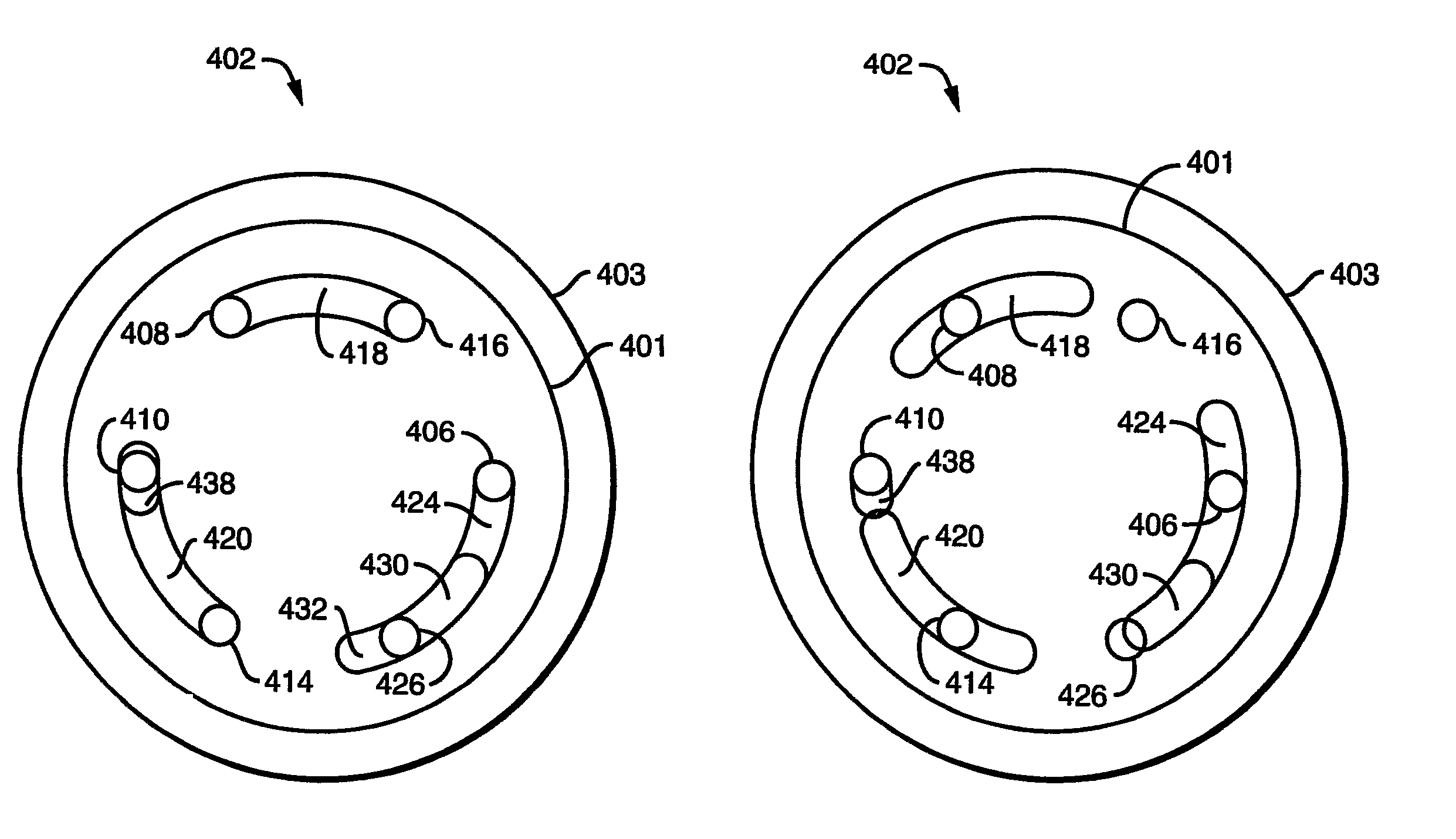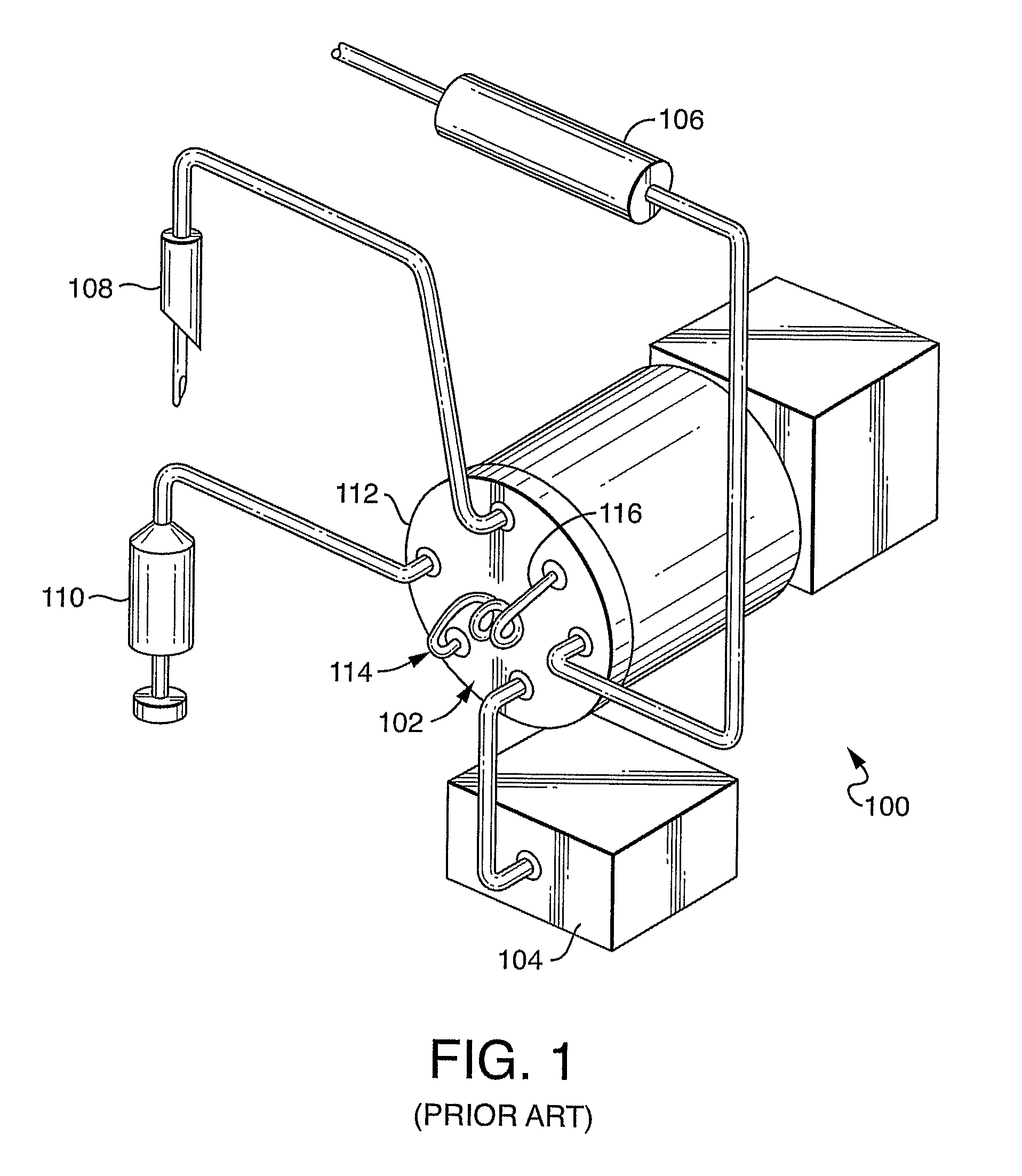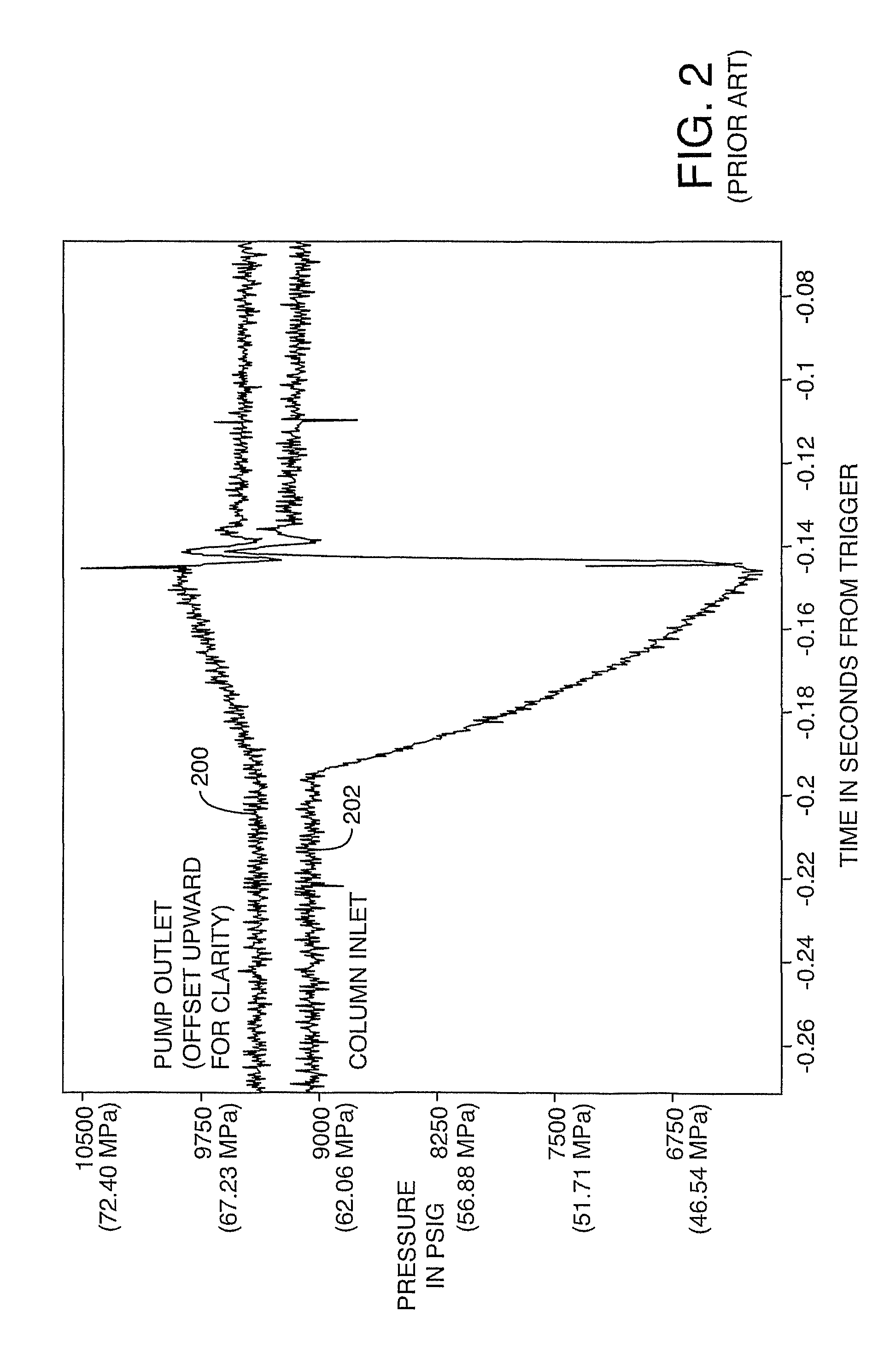Method and apparatus for sample injection in liquid chromatography
a liquid chromatography and sample technology, applied in bends, instruments, transportation and packaging, etc., can solve the problems of liquid pressure in the fluid circuit upstream of the obstruction, significant flow and pressure transients in the mobile phase stream, and temporary blockage of the flow path between the pump and the column
- Summary
- Abstract
- Description
- Claims
- Application Information
AI Technical Summary
Benefits of technology
Problems solved by technology
Method used
Image
Examples
Embodiment Construction
[0056]Detailed embodiments of the present invention are disclosed herein, however, it is to be understood that the disclosed embodiments are merely exemplary of the invention, which may be embodied in various forms. Therefore, specific functional details disclosed herein are not to be interpreted as limiting, but merely as a basis for the claims and as a representative basis for teaching one skilled in the art to variously employ the present invention in virtually any appropriately detailed embodiment.
[0057]Turning to FIG. 1, a simplified block diagram of a standard arrangement of an HPLC system 100 utilizing a rotary shear-seal injection valve 102 is shown. Rotary shear seal injection valve 102 is connected to a mobile phase pump 104. The pump 104 delivers mobile phase liquid through selected internal fluid pathways of rotary shear seal injection valve 102. A separation column 106 is also connected to the rotary shear seal injection valve. Separation column 106 acts in concert with...
PUM
| Property | Measurement | Unit |
|---|---|---|
| mean diameter | aaaaa | aaaaa |
| time duration | aaaaa | aaaaa |
| time | aaaaa | aaaaa |
Abstract
Description
Claims
Application Information
 Login to View More
Login to View More - R&D
- Intellectual Property
- Life Sciences
- Materials
- Tech Scout
- Unparalleled Data Quality
- Higher Quality Content
- 60% Fewer Hallucinations
Browse by: Latest US Patents, China's latest patents, Technical Efficacy Thesaurus, Application Domain, Technology Topic, Popular Technical Reports.
© 2025 PatSnap. All rights reserved.Legal|Privacy policy|Modern Slavery Act Transparency Statement|Sitemap|About US| Contact US: help@patsnap.com



